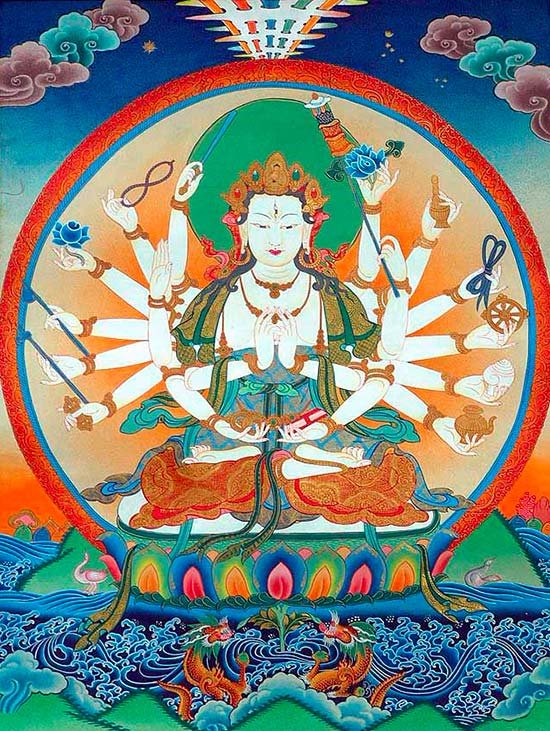Maha Prajnaparamita Sastra
by Gelongma Karma Migme Chödrön | 2001 | 941,039 words
This page describes “thirty-two substances of the human body” as written by Nagarjuna in his Maha-prajnaparamita-sastra (lit. “the treatise on the great virtue of wisdom”) in the 2nd century. This book, written in five volumes, represents an encyclopedia on Buddhism as well as a commentary on the Pancavimsatisahasrika Prajnaparamita.
Appendix 3 - Thirty-two substances of the human body
Note: This Appendix is extracted from a note from Chapter XXXIV, The eight liberations (vimokṣa):
“... besides, the body is constituted by an assemblage of thirty-six substances (ṣaṭtriṃḷśaddhātusāmagrī); why distinguish them and consider them separately?”
In the Sanskrit sources of both the Lesser and the Greater Vehicles, physical substances are 26 in number (cf. Tseng yi a han, T 125, p. 687b9; k. 27, p. 712b7; k. 49, p. 815c5; Kalpanāmaṇḍitikā, T 201, k. 5, p. 285b1; Po yu king, T 209, k. 4, p. 555b15; Tch’ou yao king, k. 212, k. 1, p. 612b17; k. 5, p. 632c22; k. 17, p. 699c7; k. 26, p. 749c16).
They are listed, with many faulty readings, in the Sanskrit editions of the Pañcaviṃśati, p. 205, l. 16–19 (T 223, k. 5, p. 253c26–29) and the Śatasāhasrikā, p.1431, l. 9–13 (T 220, k. 53, p. 298b26–28).
The Pāli suttas list 31 (Dīgha, II, p. 293; III, p. 104; Majjhima, I, p. 57; III, p. 90; Saṃyutta, IV, p. 111; V, p. 278; Anguttara, III, p. 323; V, p. 109).
The Visuddhimagga gives their number as 32 and discusses them at length. Here is the latter list with corresponding terms in Pāli and Sanskrit:
- Hair of the head (kesa, keśa);
- hairs (loma, roman).
- nails (nakha);
- teeth (dānta);
- skin (taca, tvac);
- flesh (maṃsa, māṃsa);
- tendons (nhāru, snāyu);
- bone (aṭṭhi, asthi);
- marrow (aṭṭhimiñja, asthimajjan);
- kidneys (vakka, vṛkka);
- heart (hadaya, hṛdaya);
- liver (yakana, yakṛt);
- pleura (kilamaka, kloman);
- spleen (pihaka, plīhan);
- lungs (papphāsa, pupphusa);
- intestines (anta, antra);
- mesentery (antagiṇa, antraguṇa);
- stomach (usatiya, udara);
- excrement (karīsa, karīṣa);
- brain (matthaluṅga, mastuluṅga);
- bile (pitta);
- phlegm (samha, śleṣman);
- pus (pubba, pūya);
- blood (lohita);
- sweat (seda, sveda);
- fat (meda or medas);
- tears (assu, aśru);
- suint (vasā);
- saliva (khela, kheṭa);
- snot (siṅghāṇikā, saṅghāṇaka);
- synovial fluid (lasikā);
- urine (mutta, mūtra).
